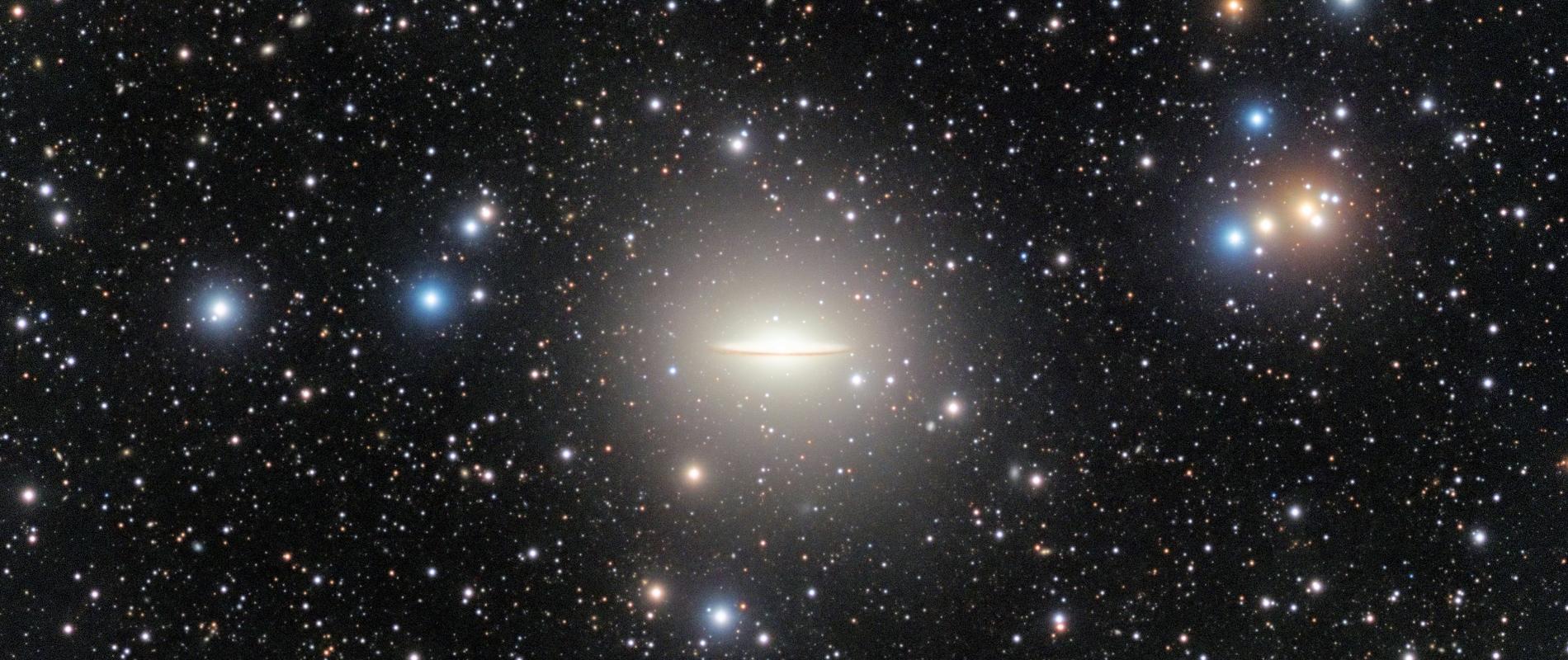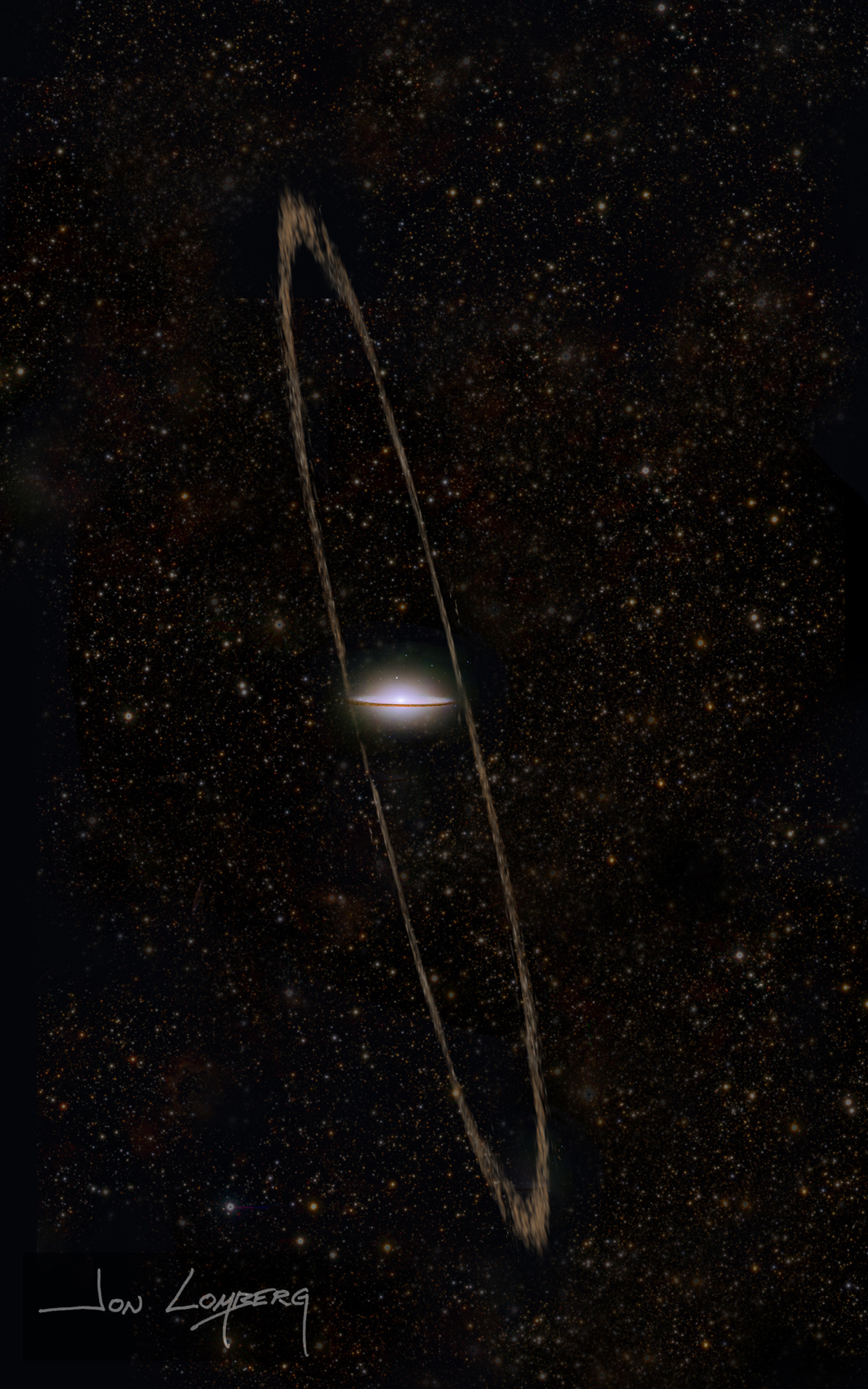The enigmatic assembly process of the Sombrero galaxy
The Sombrero galaxy, a strange hybrid between a spiral and an elliptical galaxy, has been observed in detail to look for clues about its formation process. A large elliptical structure surrounding the galaxy, the product of a minor merger with another galaxy, has been characterised, but the origin of its shape remains unknown
According to the most up-to-date cosmological model, large spiral galaxies like the Milky Way grew by absorbing smaller galaxies, in a kind of galactic cannibalism that is evidenced by the stellar tidal streams, gigantic structures which are observed around them and which constitute the remnants of their satellite galaxies. But the full story is still mostly unknown, as these star streams are very faint and only the remnants of the most recent mergers have been detected. A study led by the Institute of Astrophysics of Andalusia (IAA-CSIC) has observed in detail a large tidal stream in the Sombrero galaxy, whose strange morphology still lacks a definitive explanation.
The Sombrero galaxy (or M104) is a galaxy located about thirty million light-years away that is part of the Local Supercluster (a grouping of galaxies that includes the Virgo cluster and the Local Group, in which the Milky Way is found). It is about one third the diameter of the Milky Way and displays characteristics of the two predominant types of galaxies in the universe, spiral and elliptical. Thus, with spiral arms and a very bright central bulge, the Sombrero galaxy looks like a hybrid of the two.

"Our motivation for obtaining these deep images of the Sombrero galaxy (Messier 104) was to search for the remnants of its merger with a very massive galaxy. This possible collision was recently suggested by studies of the stellar population of its strange halo obtained by the Hubble Space Telescope", says David Martínez-Delgado, a Talentia Senior researcher at the IAA-CSIC who leads the work. Martínez-Delgado coordinates a project for the detection of stellar tidal streams that has shown the great variety of shapes of these structures, from large rings around the galaxy to clouds, shells or jets formed by stars.
Hubble observations showed in 2020 that the halo, a large, faint region surrounding the Sombrero galaxy, shows large numbers of stars rich in metals, or elements heavier than hydrogen and helium. This is a typical feature of stars of recent generations, usually found in the discs of galaxies, and very unusual in the haloes of galaxies populated by old stars. To explain the presence of young stars they proposed what is known as a "wet" merger, a scenario in which a large elliptical galaxy was rejuvenated with large amounts of gas and dust from another massive galaxy, which fuelled the formation of the disc we observe today.

“We have not found any evidence in our images to support this hypothesis, although we cannot rule out that it happened several billion years ago and its debris is completely dissolved today –says David Martínez-Delgado (IAA-CSIC) –. In our search we have been able to trace for the first time the complete tidal stream that surrounds the disc of this galaxy, and our theoretical simulations have allowed us to reconstruct its formation over the last three billion years from the cannibalism of a satellite dwarf galaxy”.
The research group thus rules out that this large stellar tidal stream, known for three decades, could be related to the event that produced the strange morphology of the Sombrero galaxy and that, if it were a wet merger, would require the intervention of two high-mass galaxies.
The work has been made possible thanks to the collaboration of professional and amateur astronomers. "We have collaborated with the Spanish astrophotographer Manuel Jiménez, who has taken the images with an 18-centimetre robotic telescope, and the renowned Australian astrophotographer David Malin, who discovered this stream on photographic plates taken in the 1990s. This collaboration demonstrates the potential of amateur telescopes to obtain deep images of nearby galaxies, which offer important clues about their assembly process that continues to this day", concludes Martínez-Delgado (IAA-CSIC).
Simulation of the tidal stream in the Sombrero Galaxy (M104). An image of the galaxy is shown on the left and a simulation movie that matches the current location of the flow is shown on the right. Credit: Denis Erkal (University of Surrey, UK), David Martinez-Delgado (IAA-CSIC).
D. Martínez Delgado et al. "A feather on the hat: Tracing the giant stellar stream around the Sombrero galaxy". MNRAS, July 2021. https://arxiv.org/abs/2106.04548
Instituto de Astrofísica de Andalucía (IAA-CSIC)
Unidad de Divulgación y Comunicación
Silbia López de Lacalle - sll[arroba]iaa.es - 958230676
https://www.iaa.csic.es
https://divulgacion.iaa.csic.es

